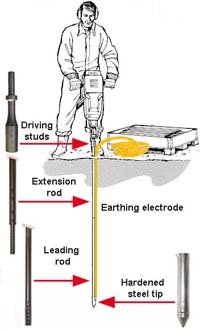|
|
||||||||||
|
Elpress Deep earthing System without
conductor joints
Elpress Deep earthing has great advantages, both as a technical and economic solution, relative to surface earthing. Current transmission takes place in the soil by means of electrolytic processes, known as ion conduction.
The electrical characteristics of
the soil depend on the proportion of salt water that is held by
means of capillary forces and osmotic pressure in the pores
between sand grains and in hygroscopic humus particles (e.g.
clay). Water in deeper ground levels usually has a higher salt
level than surface water. Download document/files Pages from Elpress head catalogue. Get Adobe Reader here
|
|||||||||
|
|
|
Etech Components, Unit 14 Park Court, Sherdley Business Park, Sullivans Way, St.Helens, Merseyside, WA9 5GZ |
|




